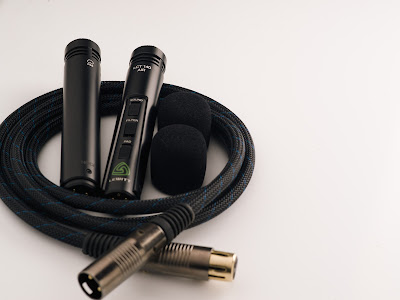How to Put Together a Winning Portfolio of Product Photos for a Microphone Company
It is very important to put together a strong portfolio. In this blog post,
I was building one for Lewitt Audio as an example to show you how to start making a product photography portfolio for a microphone brand
Lewitt Audio is a well-known microphone company that makes high-quality mics for a wide range of uses. By putting together a portfolio of photos of Lewitt Audio's products in different settings, I can show that I can capture the essence of the microphones and make them more appealing to potential customers.
Even though this blog post is about building a portfolio for Lewitt Audio, the steps can be used to build product photography portfolios for any brand. Whether you want to show your product photography skills to a fashion brand, a tech company, or a company that makes home goods, these steps can help you get started on making a portfolio that potential clients will be interested in. With that in mind, let's look at the steps you can take to make a strong product photography portfolio for a microphone brand.
If you are a product photographer who wants to show off your skills and win over potential clients, you need to put together a strong portfolio. In this blog post, we'll show you how to make a winning product photography portfolio for a microphone company. At the end, we'll also give you a sample email pitch template.
Step 1: Know the brand and who they want to reach.
Before you can start putting together your portfolio, you should find out more about the microphone company and who they are trying to reach. Check out their website and social media to learn about their brand, the products they sell, and the people who buy from them. This will help you make sure that your pictures fit their needs and interests.
Step 2: Figure out which situations you want to show.
Once you know a lot about the brand and the people they want to reach, you can choose the situations you want to show off in your product photography portfolio. For a microphone company, you might think about podcasting, making YouTube videos, and recording sound effects. These situations will help you show how flexible and effective the microphones are in the real world.
Step 3: Pick the right items to show off.
Choose the right products to show off in your portfolio based on the situations you want to cover. For a company that makes microphones, you might want to focus on their most popular or newest products. Choose products that look good and are easy to show off in the scenarios you've chosen.
Step 4: Plan your photo shoots and do them.
Now that you have your scenarios and products, it's time to plan and carry out your photo shoots. Make sure you have everything you need, such as lighting, props, and backgrounds. Take lots of pictures from different angles and points of view, and try out different lighting setups and ways of putting them together. Don't be afraid to think outside the box and try something new.
Step 5: Sort and edit your pictures.
After you've taken your photos, it's time to edit and organize them for your portfolio. Choose the pictures that show the products in the best light and edit them to make them look better. Make sure that your photos have the same lighting, colors, and layout.
Step 6: Make a portfolio of your work.
Now that your photos have been edited and picked out, it's time to make your portfolio. Choose a way to show off your work that works best for you, whether it's a website, a social media channel, or a portfolio book. Sort your photos by the situation and the product they show, and give clear descriptions of each situation and the products it shows.
Step 7: Put together your email pitch.
Once your portfolio is ready, it's time to send the microphone company an email pitch. Here's an example of an email template you can use as a guide:
Greetings, [Brand Contact]!
I take pictures of products, and I'm very interested in your microphones. I recently made a photography portfolio of your microphones in different situations, such as podcasting, making YouTube videos, and recording sound effects.
I think my photography can help your brand connect with customers and boost sales, and I'd love to talk to you about ways we could work together.
Please look at [link to my portfolio] and let me know if you have any questions or want to talk more.
Thank you for taking the time to talk to me, and I hope to hear from you soon.
All the best,
[Your Name] says:
It's important to note that the steps in this blog post can be used by companies in many different industries, not just microphone companies, to build product photography portfolios. By understanding the brand and their target audience, figuring out the situations you want to show, choosing the right products, planning and carrying out your photo shoots, editing and curating your photos, and writing a strong email pitch, you can make a portfolio that shows off your skills and the best parts of the products you are featuring.
Whether you want to show your product photography skills to a fashion brand, a tech company, or a company that makes home goods, these steps can help you build a portfolio that potential clients will be interested in. The key is to make your portfolio and pitch fit the needs and interests of the company you want to work for, and to show off your unique style and strengths as a product photographer.



